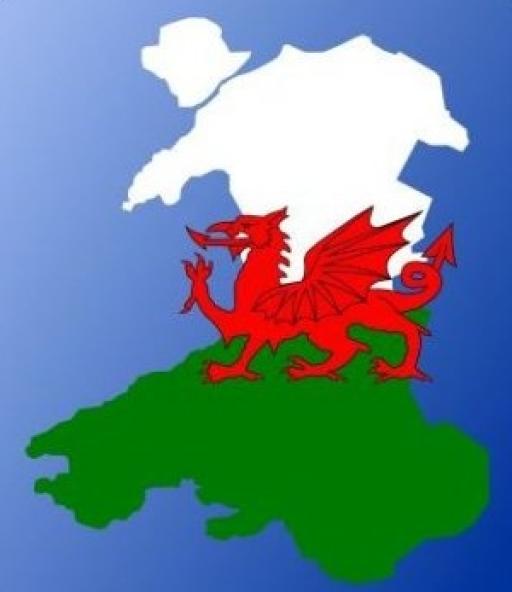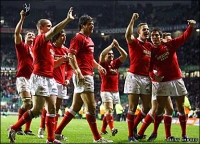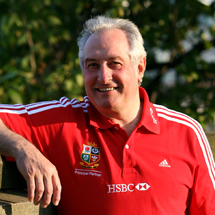
Recently Rated:
Stats
Welsh rugby – more than just a game?
 When the then Welsh Rugby Union group chief executive Roger Lewis said in an interview, Rugby reaches out in so many ways and is so much more than just a game its the glue that holds communities together., he could never have imagined how that would resonate with Welsh people. Welsh international Gareth Edwards, voted by international rugby players as the greatest player of all time, put it even more dramatically, Rugby is part of the DNA of Welshman and woman across the globe. It is at the heart of our very essence, defining us as individuals and as a nation.
When the then Welsh Rugby Union group chief executive Roger Lewis said in an interview, Rugby reaches out in so many ways and is so much more than just a game its the glue that holds communities together., he could never have imagined how that would resonate with Welsh people. Welsh international Gareth Edwards, voted by international rugby players as the greatest player of all time, put it even more dramatically, Rugby is part of the DNA of Welshman and woman across the globe. It is at the heart of our very essence, defining us as individuals and as a nation.
Stirring images of iconic Welsh singers like Bryn Terfel, Kathrine Jenkins, Aled Jones, Shirley Bassey, Tom Jones and Shn Cothi leading the crowd in Mae hen wlad fy nhadau at the Millennium Stadium might make an observer wonder why anyone would doubt that rugby was more than just a game. However, beyond the 80 minutes of passionate play and the subsequent period of bragging rights or drowning of sorrows, a case to question this assertion can be made. Looking under the skin of the role of rugby in Wales, it is quickly evident that the vast majority of Welsh people neither participate in rugby nor follow it beyond the international matches, particularly the matches between Wales and England, Ireland or New Zealand.
 The questions then arise: how, when and why did rugby assume an iconic identity for Wales. Fixing an exact date and place when anything became an iconic image of a country seems an unlikely circumstance, but a noted historian of rugby, Gareth Williams, fixes the date on which rugby assumed that role in the hearts and minds of Welshmen firmly as 16 December 1905 at Cardiff Arms Park. That was the day when Wales beat a hitherto undefeated New Zealand All Blacks team by three points to nil. Although a small margin of victory, it had to be seen in the context of New Zealand scoring 800 points and conceding only 27 against the other British teams on their UK tour that year.
The questions then arise: how, when and why did rugby assume an iconic identity for Wales. Fixing an exact date and place when anything became an iconic image of a country seems an unlikely circumstance, but a noted historian of rugby, Gareth Williams, fixes the date on which rugby assumed that role in the hearts and minds of Welshmen firmly as 16 December 1905 at Cardiff Arms Park. That was the day when Wales beat a hitherto undefeated New Zealand All Blacks team by three points to nil. Although a small margin of victory, it had to be seen in the context of New Zealand scoring 800 points and conceding only 27 against the other British teams on their UK tour that year.
It was certainly a golden age for Welsh rugby winning the triple crown six times in 12 years between 1900 and 1911 was a magnificent achievement for a tiny nation and an opportunity for pride, both for Welshmen in the old country or those dispersed throughout the world. Wales was making a major impact in rugby, to use a boxing analogy, punching well above her weight. At the time of the victory against New Zealand, Wales was at its zenith industrially with Welsh steel in the construction of much of Europes shipping, and its coal firing the boilers of those ships. Historian John Davies linked rugby closely with the industrialisation of Wales and reinforced it as a powerful symbol of the nations identity. He suggested sport, but not necessarily rugby, had become the new religion of the Welsh people rather than Christianity and Gareth Williams suggested that the ebb and flow of Welsh rugbys fortunes coincided with similar cycles in the Welsh economy and in the confidence in Wales as a nation. Whilst there is clearly a case for sport in general and rugby in particular being akin to a religion for some, a case might be made for the National Health Service taking the place of Christianity as a cherished value. Similarly, whilst the economic situation has been poor in Wales since 2008, Wales rugby has done quite well.
Comparison with Christianity is important because the Nonconformist chapels ultimately contributed a significant role in its growth. They placed a seal on the iconic role of rugby in Wales with their late-in-arriving but nevertheless positive affirmation and endorsement. Although an Anglican College, St Davids at Lampeter, had led the introduction of rugby to Wales, the Nonconformist chapels were initially vociferous in opposition, associating the game with intemperance, blasphemy and Sabbath-breaking. The religious revival of 1904 led to a marked decline in the sport in Wales and the (at least, temporary) closure of many clubs. However, the dramatic victory of 1905 made a rapid reversal of this process which led Gareth Williams to state that, [Rugby] would now play the role that religion had once enjoyed as a popular mass activity.
Eventually the ministers and deacons began to take a pragmatic view and reluctantly began to be more positive. Some even constructed sermons from the discipline that the teams showed in playing successful games. A century ago the Chapel still held significant sway in the communities of Wales and so the removal of disapproval and then affirmation of the game gave tacit permission both to be participants and to spectators of rugby.
Christianity still features, possibly only for historical reasons, in rugby. The stands still ring out with hymns like Cym Rhondda and Calon Ln amid secular songs today. Interestingly, rugby matches in south Wales where Welsh language is not widely used are still occasions when songs like Sospan Fach and Calon Ln may be heard in sometimes shaky Welsh. Cymdeithas yr Iaith Gymraeg may take some comfort!
 Max Boyce, ex-miner from the Valleys and popular comedian and folk singer wrote a number of songs that captured the intrinsic Welshness of rugby. A more reflective song, Ten Thousand Instant Christians juxtaposes the almost religious fervour and devotion of rugby fans in an ironic contrast with the closed and boarded former Chapels echoing with the hymns of yesterday.
Max Boyce, ex-miner from the Valleys and popular comedian and folk singer wrote a number of songs that captured the intrinsic Welshness of rugby. A more reflective song, Ten Thousand Instant Christians juxtaposes the almost religious fervour and devotion of rugby fans in an ironic contrast with the closed and boarded former Chapels echoing with the hymns of yesterday.
When He sees the Hope and Anchor
Where we sang before the game
Where Cwm Rhondda and Delilah
First sounded both the same
The bar was filled with singing
Hymns came on a tray
Saturday was Sunday
I wonder what Hell say
A more upbeat song of Max Boyces which inevitably features at every international Welsh rugby game is Hymns and Arias, a nod to the combination of sacred and secular singing at matches. Possibly its enduring success is because it is an account of a coach trip from south Wales to Twickenham to watch Wales play the great enemy, England. Of course, Wales won and so the somewhat worse-for-wear Welshmen were able to join in the rousing chorus:
And we were singing hymns and arias,
Land of my Fathers, Ar hyd y nos
Contained within that good-natured snipe against the English is a deeper issue. The long-standing rivalry between the nations is read by some as enmity and mention is made of any real or perceived injustice to Wales from Edward I, through exploitative pit, steelworks and quarry owners, to the Welsh Not placard that children heard speaking Welsh in some schools were forced to wear in the late 19 th century. Others will say that the enmity lasts for the duration of the match with peace being declared in the bar after the game. South Wales rock group Stereophics even brought out a song in 1999 with the title, As long as we beat the English, (we dont care).
 Welsh rugby gives Welsh men and women an opportunity for pride, particularly in individual players who have excelled. There can be no better example than Gareth Edwards, voted the greatest player of all time by his peers in a 2003 poll in Rugby Magazine and by former England rugby captain Will Carling as the greatest player ever.
Welsh rugby gives Welsh men and women an opportunity for pride, particularly in individual players who have excelled. There can be no better example than Gareth Edwards, voted the greatest player of all time by his peers in a 2003 poll in Rugby Magazine and by former England rugby captain Will Carling as the greatest player ever.
National Eisteddfod organiser Hywel Edwards controversially suggested that rugby shirts might be a more appropriate Welsh national costume for girls than Lady Llandoverys tall hats, shawls and aprons, or boys dressed as colliers for St Davids Day celebrations. He said, Images of children in lace aprons and colliers clothes beamed around the world on St Davids Day created an image of Wales as a backward country stuck in the past.
However, active participation in the game of rugby in Wales is not high. Compare Wales with New Zealand, a similar size nation.
| Wales | New Zealand | |
| Population | 3 million | 4 million |
| Male rugby players | 70,000 | 142,000 |
| Female rugby players | 2,000 | 6,000 |
Source: Sports Council Wales
Similarly, home attendance at Welsh regional rugby matches during 2006/07 was between 5, 000 and 10,000, whereas home attendance at Cardiff City FC was 15,000 and Swansea City 12,500. English Premiership attendance 34,000 and Manchester United FC 76,000. Sports Council Wales reported that rugby came ninth in a list of participation sports in Wales, whereas football was third.
A YouGov/Daily Telegraph poll in 2005 looked at the proportion of sports fans in Wales/Midlands taking an interest in a number of sports. Football came top at 68% and rugby was mentioned by only 48% less than half the respondents.
Despite these low proportions, Welsh people demonstrated their commitment to their national team with a quarter of the population watching rugby on TV a higher proportion than in any other country. A 2009 Wales v England international was watched by 55% of Welsh viewers but only 18% of English viewers.
What explains these inconsistencies? Welsh rugby was, and still is a classless game where its players were historically as likely to be consultant surgeons or GPs as they were to have been from the pits or the steelworks. That level playing field has contributed to Waless embracing the game to her heart.
Kenneth Morgan asserts that Rugby was, and remains, an attractive aspect of the national identity of Wales, but points out that nationalists feel preoccupation with rugby diverts people from the greater priority of national independence. That reservation by nationalists does reflect some other issues. The heartland of nationalism, north and west Wales is largely rural, other than some medium size towns on the north Wales coast. They are also areas with the greatest concentration of Welsh language and a very different focus of sport: walking, climbing, mountain biking use and sea-based pursuits. Theres no historic tradition of rugby in these areas and many football fans in north Wales look to the great football clubs of north-west England which are easily accessible. The large Magners League clubs are all based in south Wales: Cardiff, Newport, Llanelli and Swansea.
If culture, geography, language and sports interest were the sole factors that determine the role of rugby as an icon of Wales, then one could make a stronger case for rugby being more than a game predominantly in south Wales. The huge crowds on the terraces, at least of international matches, are united in their commitment to their national team, becoming a huge corporate sixteenth player.
Rugby (in reality, international rugby) brings people together with a mixture of nostalgia, pride in a nations achievement, a reflection of Welsh values and a history of great success in an environment where the Welsh language features in a non-divisive way and it can genuinely be described as more than a game.
(I wrote this a year ago as part of my Welsh History studies at Bangor University but thought rugby fans and haters alike might be surprised at the true interest in Welsh rugby. References, sources and bibliography are available on request.)

More like a religion